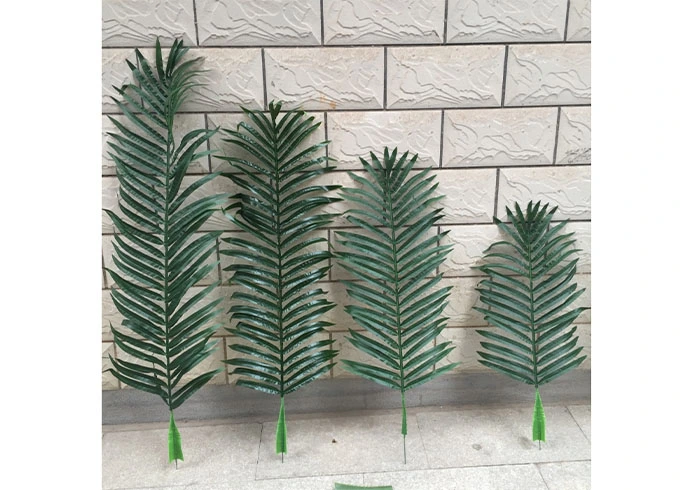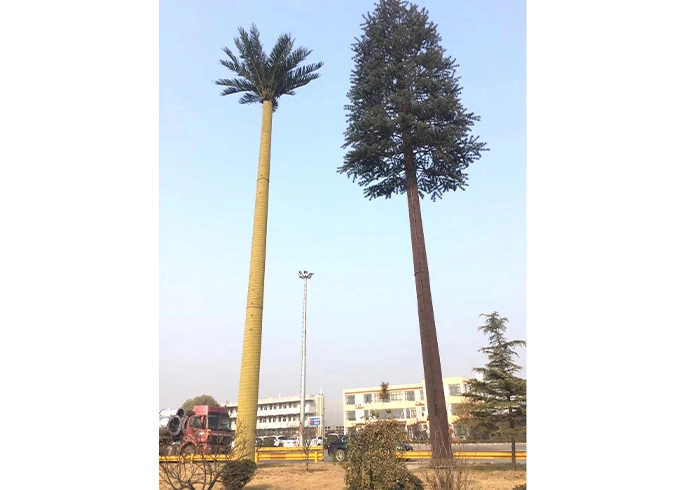Need essential telecom infrastructure but hate ugly towers spoiling the view? Communities often resist intrusive structures. Camouflage monopoles offer a smart solution, hiding technology in plain sight. Camouflage monopole towers blend technology with the environment by disguising the structural steel pole and antennas. They use materials and designs that mimic natural elements like trees or architectural features like flagpoles, reducing visual impact. I've seen firsthand how important connectivity is, but I also understand why people dislike seeing stark steel towers everywhere. It's a constant balancing act. Camouflage monopoles represent a really thoughtful approach to this problem. They show how we can deploy necessary technology without sacrificing the beauty of our surroundings. These structures integrate advanced engineering with careful design to meet communication needs while respecting the local aesthetic. Let's explore how they achieve this blend through their design, structure, applications, and the benefits they bring. It’s about making technology a better neighbor.
Worried a new cell tower will stick out like a sore thumb? Standard towers often clash with their surroundings. Clever camouflage designs help monopoles integrate visually into different landscapes. Camouflage monopole towers are designed using materials like fiberglass reinforced plastic (FRP) and specialized paints. These create realistic textures and colors, mimicking tree bark, foliage, or flagpole surfaces to conceal the pole and antennas. ! The first time I saw a really well-done tree pole, I had to look twice to realize it wasn't real. The artistry involved is impressive. The goal isn't just to cover the pole, but to make it genuinely resemble something else that belongs in that specific location.

The design process starts with understanding the environment.
Tree Designs: Common types include Pine, Palm, Fir, and Cypress. Designers study real trees to replicate bark texture, branch patterns, and foliage density. The shape of the pole itself might be tapered to look more natural.
Flagpole Designs: In urban or suburban areas, disguising a monopole as a flagpole is very effective. The pole is smooth, often painted white, and topped with a functional or decorative finial. Antennas are hidden inside the upper section.
Other Structures: Towers can also be disguised as clock towers, church steeples, or integrated into existing building architecture.
Achieving realism requires specific materials. Bark sections are often molded from FRP using molds taken from actual trees. Foliage ('branches' and 'leaves') is made from durable, UV-resistant plastics designed to look realistic and withstand weather. Antennas are usually hidden within an FRP shroud at the top (for tree poles) or inside the pole itself (for flagpoles), using materials transparent to radio frequencies. Careful painting and texturing complete the illusion. The key is matching the disguise to the local environment.
Concerned that adding camouflage compromises the tower's strength? Aesthetics are nice, but safety comes first. Rest assured, these towers are engineered for robustness despite their appearance. Yes, camouflage monopole tower is engineered to meet the same rigorous structural integrity and safety standards (like TIA/EIA-222) as traditional steel monopoles. The camouflage elements are additions, not replacements for structural components.

Safety is always our top priority in any tower project. I often explain to communities that the 'tree' or 'flagpole' appearance is just a disguise. Underneath the aesthetic cladding is a robust, engineered steel structure designed to handle wind, ice, and equipment loads.
The core of a camouflage monopole is a standard steel monopole. This pole provides the primary load-bearing capacity. It's designed using established engineering principles and meets industry standards for telecommunication tower structures. The thickness of the steel, the diameter, and the foundation design are all calculated based on the required height, antenna load, and local environmental conditions (like maximum wind speeds).
The camouflage materials (bark, branches, flagpole shrouds) are typically attached to the steel pole using brackets or framework. Engineers carefully calculate the added weight and wind load ('wind sail' effect) of these aesthetic components. The underlying steel pole and its foundation are designed to safely support these additional loads. The attachments themselves are also designed to be secure and durable.
The foundation requirements for a camouflage monopole are very similar to those for a standard monopole of the same height and load capacity. Installation involves erecting the steel pole sections first, then attaching the camouflage elements. Access for maintenance technicians to the antennas and cables is also incorporated into the design, often via internal ladders or climbing pegs hidden from view. These towers are built to last, combining aesthetic appeal with proven structural reliability.
Wondering where these disguised towers fit best? Their adaptability is key. Camouflage allows monopoles to be placed effectively in visually sensitive areas, both urban and rural. Camouflage monopoles are effective in national parks, scenic areas, historic districts, residential neighborhoods, and urban centers. They minimize visual disruption where standard towers would face strong opposition.

I've worked on projects placing towers near sensitive locations like historic landmarks and inside beautiful parks. In these situations, a standard lattice tower or even a regular monopole would likely be rejected. Camouflage provides a way to deliver needed service while respecting the character of the area.
In cities and suburbs, blending in often means looking like part of the built environment.
Flagpoles: These are ideal for municipal buildings, schools, business parks, and shopping centers. They look natural in these settings.
Slim Poles/Light Poles: Sometimes, monopoles can be disguised as sleek light poles or integrated into street furniture.
Rooftop Concealment: Antennas can be hidden within faux chimneys or equipment screens on buildings. The goal is to make the infrastructure unobtrusive, maintaining the urban aesthetic.
In natural landscapes, the strategy shifts to mimicking nature.
Tree Poles (Pine, Palm, etc.): These are used along highways, in parks, near campgrounds, and on the edges of forests. The key is choosing a tree type that matches the local vegetation. A palm tree pole would look out of place in a pine forest.
Monopoles Painted Neutral Colors: Sometimes, simply painting a standard monopole a muted brown or green can help it blend better into a distant hillside or wooded backdrop. Camouflage designs often help navigate strict zoning regulations and gain community approval in areas where aesthetics are a primary concern.
Thinking beyond just looks, what real advantages do these towers offer? Reduced visual impact leads to smoother project approvals. This benefits both the environment and community relations significantly. The main benefits are reduced visual pollution, which preserves scenic beauty and property values, and increased community acceptance, leading to faster deployment of communication services with less opposition. Dealing with zoning boards and community groups, I've seen how visual concerns can completely halt a needed infrastructure project. Presenting a camouflage option often changes the conversation. It shows a willingness to address aesthetic impacts, making the project feel more like a collaboration.
The most obvious benefit is minimizing visual blight. By blending into the surroundings, camouflage towers help maintain the scenic quality of landscapes, parks, and neighborhoods. This is important not just for residents' enjoyment but can also help protect tourism appeal and nearby property values, which might be negatively affected by a highly visible industrial structure.
Community opposition based on aesthetics is a major hurdle for network expansion. Camouflage towers often face less resistance, leading to faster permit approvals and site acquisition. This allows carriers to deploy needed wireless services (like 5G) more quickly and efficiently, benefiting the entire community with better connectivity.
Choosing a camouflage design demonstrates sensitivity to local concerns. It positions the infrastructure provider as a responsible partner rather than an indifferent corporation. This can foster goodwill and make future infrastructure projects easier. It's about being a "good neighbor" by minimizing your footprint, both physically and visually. While not a direct environmental benefit like habitat restoration, reducing visual intrusion is a form of environmental respect that communities value highly.
In the evolving landscape of telecommunications infrastructure, camouflage monopole towers by our Junjiang Construction steel tower factory have emerged as a pivotal solution to balance technological advancement with environmental aesthetics. By integrating advanced engineering with thoughtful design, they provide a solution that meets the growing demand for telecommunications infrastructure while preserving the aesthetic and environmental values of the area.
